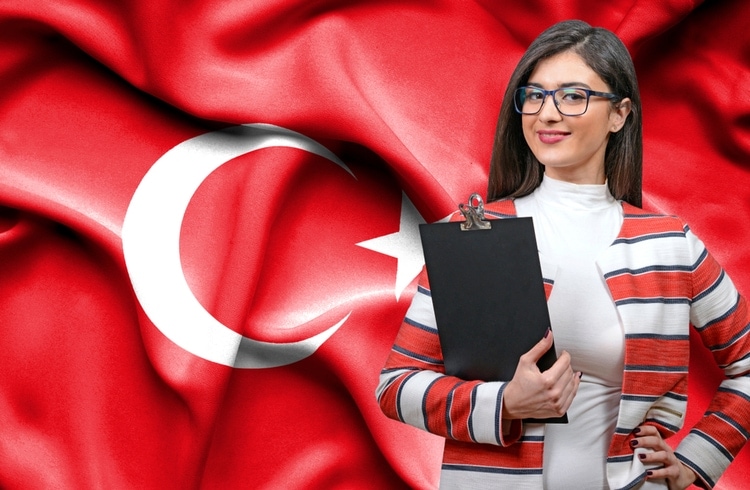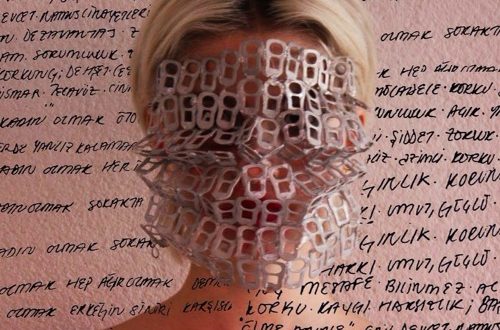
29 Surprising Facts about the People of Istanbul!
Want to know more about Istanbul and its inhabitants?
People of Istanbul
The easiest way to do this is with stories, data and pictures of the faces behind the metropolis.
1. Do 15 or 17 million people live in Istanbul?
Nobody really knows the answer to this question. Yes, there are official figures, but these figures do not include the illegal settlements in and around Istanbul.
Inhabitants in the so-called Gecekondus hardly appear in public.
Gecekondu is the Turkish name for a simple or primitive settlement on the outskirts of a large city. The word is not to be confused with a slum. Literally translated, Gecekondu means something like “put down at night”. This is an indication of the often quick and also very simple construction of these settlements.
Some Turkish sources believe that more than 20% of the apartments in Istanbul were built without a legal building permit.
2. Up until 1975, “only” 2.7 million people lived in Istanbul
Istanbul is the fastest growing major city in Europe. No other city gained so many inhabitants in such a rapid period of time.
That means that Istanbul apartments are always in short supply; nowhere else in Europe do so many new apartments need to be built. The Istanbul real estate market is one of the hottest addresses in Turkey.
The city’s increase in the number of inhabitants is currently extremely rapid. This is mainly due to the influx of emigrants from Central and Eastern Anatolia. More than 20 million people are expected to live in Istanbul by the year 2025. For this reason, it is not uncommon to see construction sites on every corner in Istanbul.
3. Is there a crosstown rivalry between Istanbul’s European and Asian sides?
It depends if you are a soccer fan or not:
Istanbul has three soccer teams; the Besiktats and Galatasaray are the European teams while Fenerbahce Istanbul is the Asian team.
Otherwise, there is no feeling of enmity between the two sides of Istanbul.
4. Istanbul is the largest city in Europe
If you add the European and Asian sides together, Istanbul is the largest city in Europe.
If you count only the European side of Istanbul, you can calculate around 8 million inhabitants in 2016.
That makes Istanbul the second largest city in Europe, following Moscow.
5. Mainly Greeks lived in the Galata district of Istanbul
In 1923, after the Turkish-Greek War and the Cyprus War, 10% of Istanbul’s population were Greeks.
They mainly lived in the Galata district – today it is known as the Beyoglu.
The same proportion of Greeks existed in the days of the Ottoman Empire, which is logical. After all, the Ottomans conquered Istanbul / Constantinople, taking it from the Byzantines, who spoke Greek at the time.
6. Hüzün is the collective feeling of …melancholy
Hüzün describes an attitude towards life.
There is no direct translation into German (or English) for the Hüzün feeling. The easiest way to describe it is:
Hüzün is a mood of failure and loss. It’s like looking back wistfully at old, past memories. Memories that won’t come back. In a mixture of sadness and melancholy. In tones of black and white .
The Turkish Nobel Prize laureate Orhan Pamuk described Hüzün as follows: “Hüzün, the Istanbul feeling! A collective mood of failure and loss. “
7. The capital of several world empires
In Istanbul, its residents learn the rich history of their city starting in school.
The first name of their city was Byzantium. That was a Greek settlement founded 2,700 years ago.
Istanbul’s heyday began in 336. That was the year that Roman Emperor Constantine moved his residence to the then small town of Byzantium on the Bosporus. Constantine gave the new city its then name, Constantinople “The City of Constantine”.
Istanbul kept this name as the capital of the Eastern Roman and later the Byzantine Empire. Even the Ottomans did not change the name after conquering Constantinople in 1453. Istanbul was just an alternate name.
For 600 years, Istanbul was the capital of the Ottoman Empire, until 1923. At that time, the Turkish state founder Mustafa Kemal Ataturk relocated the capital to Ankara.
Ataturk also made Istanbul the city’s only official name.
8. The Mahala is the village in Istanbul
The Mahala is something like a small village in the middle of the metropolis. Simply put, a mahala is your own neighbourhood in a Turkish city.
The residents of Istanbul know their neighbourhood – in a good and bad sense. The Mahala is also still in Istanbul. The influence of one’s own neighbourhood is disappearing more and more.
The Mahala was originally a street, often a cul-de-sac or a more demarcated area of the city. It consisted of old stone or wooden houses.
Since many residents of Istanbul residents live in apartment buildings, just like in any large city, the influence of the Mahala has all but disappeared. This doesn’t bother the young people of Istanbul at all. For them, the Mahala was synonymous with very conservative influences and peer pressure. You lived in the middle of the city, but it felt as if you were still in a village. This is no longer the case.
If you would like to know more about it, I recommend the book “Museum of Innocence” by the Turkish Nobel Prize laureate Orhan Pamuk. It is set in the Mahala on Cukur Cuma Street in Beyoglu.
9. Istanbul has Russian, Polish and German districts
Polonezköy is a village with 400 inhabitants, 30km east of the city centre. The name says it all, Polonezköy means “Polish village”. Settlers founded it in 1842.
This place is something that you’d need an insider tip to find. Its appearance is typically Polish, for example, the small village has a Roman Catholic church and cemetery. It features Polish half-timbered houses, which its residents cherish, together with enclosed gardens filled with fruit trees and bushes.
I did some researdh on how Germans currently live in Istanbul. Some estimate around 15,000, while others say that the number is closer to 45,000. What is certain is that Istanbul and Germany have a long, common past.
Istanbul residents recognise this every day in lively places such as the German Fountain – on the town square facing the Blue Mosque, the Haydarpasa train station or the Istanbul Lisesi (“Istanbul High School”), which is considered to be one of the best schools in all Turkey; German and Turkish teachers teach there together.
Many other countries have joined the foreign patchwork of residents: these include several streets in Fatih, where many Russian shops have sprung up. Descendants of the Jews who, during the 15th century, fled to the Ottoman Empire to escape the Spanish Inquisition still live in Beyoglu.
When it comes to Istanbul’s emigrant population, Istanbul residents often think of the Cihangir district in Beyoglu. It has the reputation of being the most diverse European neighbourhood in Istanbul.
10. Cliché: Orient and Occident
The connection between Orient and Occident: the East and the West. The cliché has weighed heavily on Istanbul for quite some time.
But, in many cases, Istanbul provides the balance between the two extremes.
Geographically, Istanbul is the link between Asia and Europe. And Istanbul is the westernmost city in Turkey.
11. Istanbul residents still shop at the baccalaureate
A baccalaureate is a type of general store in Turkey. The shops are often tiny; onlythree- or four-square meters in size, but in this small space, you can pretty much find anything you can imagine.
Newspapers, ice cream, toilet paper, bread – Istanbul’s residents buy everything at their little corner shop, known as a bakkal.
These shops are still doing very well in Istanbul in comparison to the jumbo supermarkets. That is not likely to change anytime in the near future, either.
12. Most water bottles in Europe go over the counter
Unfortunately, the water pipes in Istanbul do not provide drinking water to its citizens. That’s why the residents of Istanbul buy huge quantities of water bottles.
Water is sold practically everywhere in Istanbul. The Simit stands sell water bottles as well as the Bosporus ferries.
13. Fishing, target shooting and barbecuing are national sports in Istanbul
Fishing is self-explanatory: go to the Galata Bridge or to the Bosporus from the Asian side, between Üsküdar and Kadiköy. Day, night, rain or sun – You will always find fishermen there!
Barbecue as a sport? Yes. I would go out on a limb and declare that barbecuing is a national sport in Turkey. Sometimes, people start a small fire between the fishermen along the banks of the Bosporus so they can grill their fresh catch.
As you pass along the streets of Istanbul’s old town, you can sometimes catch a glimpse of small grill ovens. I haven’t even mentioned the thousands of residents who go to the barbecue areas around the city every weekend.
14. We are all Crazy about tulips
You may be surprised to find out that no,
Amsterdam is not the world capital of tulips. The Dutch only imported tulips from Turkey.
The nation that is actually the craziest about tulips is Turkey.
You want to know how crazy?
Well, for starters, people from Istanbul shape their tea glasses like tulip flowers. The international festival of tulips takes place in Istanbul every year.
The Turkish Ministry of Tourism’s logo – Turkey Home – contains a tulip.
15. Residents of Istanbul tend to be superstitious
You’ll find the Turkish Eye (Nazar Amulet) on every street corner in Istanbul.
It is Turkey’s most popular lucky charm. Its strength should keep the Evil Eye away from its wearer.
Even if the youth of Istanbul don’t really care for such “lucky charms”, they are still a little bit questionable.
People like to install them over their front door, dangle them on key chains, wear them as bracelets or hang them on the rear-view mirror of their car.
Just keep your eyes open. You’ll start
seeing them everywhere.
16. Residents of Istanbul (and all Turkey) go to have gender-specific hairdressers …
… in other words, one hairdresser for men and one hairdresser for women.
There is the Barber and the Kuaför (Coiffure).
So, don’t confuse the two. As a woman, you go to the Kuaför. As a man, you will feel right at home with Barber.
17. Istanbul is insane about football!
Istanbul has three major football (soccer) teams: Besiktas, Galatasaray and Fenerbahce. Everyone has their favourite team.
Their home games attract tens of thousands of people to the football stadiums every time. Besides that, there are at least as many fans watching the games from their barstools in the clubs in Istanbul. If you are a fan of the Fenerbahce team,, for example, the desirable hot spot is Bagdat Caddesi on the Asian side of Istanbul.
If you have ever visited the bars and clubs during a Fenerbahce Istanbul home game, you will know what I mean.
18. Built on Seven Hills
This is something else that Istanbul has in common with Rome, besides once being the capital of the Roman Empire.
Since most decisions were based tradition and superstition at the time, Constantine founded his new capital on seven hills, just like Rome.
That is why the city was once called the “City of Seven Hills” in ancient times.
Today, in Rome, there are churches or palaces on each of the seven hilltops. In Istanbul, there are mosques or the Topakpi Sultan’s Palace. For example, one of the hilltop mosques is the Suleymaniye Mosque.
It’s really an amazing site, especially when the sun goes down.
19. Turkish Coffee disappears from Istanbul
Coffee and Istanbul is a centuries-old tradition. During the middle ages, Europe’s first coffee house opened here, in Istanbul in the year 1550. Since then, it’s been hard to imagine the residents of the city without their coffee.
The original Turkish-style coffee (mocha) is more and more disappearing from everyday life.
The big coffee house chains have taken over the market. This includes, for example, the Turkish coffee house chain Yemen Kahvesi, which is a clone of Starbucks.
I personally find small cafes with a good flat white, such as the Kronotrop Coffee Bar & Roastery in Beyoglu, much more interesting.
20. Subtropical Climate with Wintertime Snow
The residents of this city have gotten used to pretty much every type of weather conditions imaginable.
A continuous 35 ° in summer? No problem.
Snow-covered roofs of Hagia Sophia and the Blue Mosque? This is also standard procedure in the repertoire of Istanbul’s varied climate.
21. Where are the “Young and Hip” of Istanbul?
The question is: The Beyoglu or Kadikoy district? The Asian or the European side?
Beyoglu is a district filled with bars, clubs, art galleries, boutiques and the Istiklal Caddesi shopping area. It represents the “young, artistic and hip of Istanbul”. At the same time, the district also stands for tourism, with 50,000 new guest beds in just a decade.
Kadiköy, on the Asian side of the city, is the counterpart to Beyoglu with its own shopping and party street called Bagdat Caddesi.
More and more, Istanbul’s youth are gravitating towards Kadikoy.
22. Istanbul is right in the middle of in an Earthquake Zone
Istanbul residents are almost always prepared for an earthquake. Just south of the city, the Anatolian tectonic plate pushes into the Eurasian plate.
Since the beginning of history, this earthquake fault has been the cause of more than 50 severe earthquakes in this city. Even in the days of ancient Rome, people were prepared for this; it was simply a fact of life.
These days, the residents of the city are anticipating a major earthquake. It’s been scientifically forecasted, and the city has begun making preparations for it.
Considering the local geology and seismology, I find it even more impressive that a building like Hagia Sophia has stood undamaged for over 1,500 years.
23. Istanbul is the 21st largest city in the world.
With its official population of 15 million inhabitants, the city is the 21st largest metropolitan area in the world. In comparison to Tokyo which is in first-place, Istanbul lacks a whopping 25 million inhabitants! 37 million people currently live in the metropolitan area of the Japanese capital[K1] .
Altogether, 25% of the inhabitants of Turkey live in the greater Istanbul area – which includes Izmit and Bursa.
24. The Bosporus divides Istanbul and two continents
The Bosporus Strait separates Istanbul’s Asian side from its European side.
The first bridge over the Bosporus was not opened until 1973. Before that, the only way to get to the other side of the city was by boat and ferry.
In the Middle Ages, Leonardo Da Vinci had devised a plan to connect the Bosporus with a bridge. However, his plan was never implemented. The distance of 1,500m was probably too long back then.
Only the Persians managed to build a type of bridge over the Bosporus on their way to Greece. They tied dozens of boats in a row on which their army could cross the Bosporus.
25. Beach vacation in Istanbul?
Are you interested in sunbathing in the city ? Well, of course you can!
There are quite a few beautiful sandy beaches to choose from. We have beaches on both the Marmara Sea in the south and on the Black Sea in the north.
Istanbul’s urban area includes, for example, the seaside resorts of Sile and Kilyos. Yes, it’s possible to go to a beach located right in the city centre; on the Asian side there is Cadebbostan Beach.
On weekends, the residents of the city make a devoted pilgrimage to the Prince Islands, on the Sea of Marmara. Together with their spacious beaches, they are part of Istanbul’s urban area.
26. Specific culinary offerings, different cuisine than the rest of Turkey
Istanbul dishes are unique, in comparison to the rest of Turkey.
I am mainly referring to the Ottoman Palace kitchen. In the Topkapi Palace, more than 1,000 cooks took lavishly good care of the Sultan and his court.
In the process, they created many unusual dishes. Many of these dishes are still on the menus of top restaurants in Istanbul.
How about, for example, a filled honeydew melon or Hünkar Begendi (Sultan’s delight)? It’s a sumptuous lamb ragout on a creamy aubergine puree.
27. The Residents of Istanbul generate one third of Turkey’s economic output
Forty to 50% of the Turkish economic output is concentrated in the Sea of Marmara region. This includes Istanbul, which is responsible for around 30% of the total gross national product of Turkey.
There are also prosperous cities like Izmit, with its one million inhabitants and Bursa, with three million inhabitants, each situated less than 50 km from Istanbul as the crow flies.
That, together with its population, makes Istanbul the clear cultural and economic centre of Turkey, in spite of the fact that Ankara has been the Turkish capital since 1923.
28. Four UNSECO World Heritage Sites
The old town Sultanahmet is home to the Hagia Sophia, Blue Mosque and the Topkapi Palace; all named as world heritage sites.
The district surrounding the Suleymaniye Mosque, the Grand Bazaar and the Theodosian Wall are also under UNESCO world heritage protection.
Sometimes, the residents of Istanbul residents sometimes take these sights for granted or feel proud that the Turks conquered Constantinople, which is today’s Istanbul.
29. Street Food Capital of Turkey
Street food is an integral part of city life for both Istanbul residents and its many travellers.
Just think of the Galata Bridge without Balik Ekmek or an Istanbul without the Simit stands! That would completely change the face, and vibe, of the city!
All the stalls with corn, simits, chestnuts, Balik Ekmek and all the other street food are simply part of the heart and soul of Istanbul!
Congratulations!
You have reached the last point in my facts, figures and inside glimpse about the inhabitants of Istanbul.
How about you? Do you know any other interesting stories about the city’s residents?
Please share them in the comment section below!
I look forward to hearing from you!




